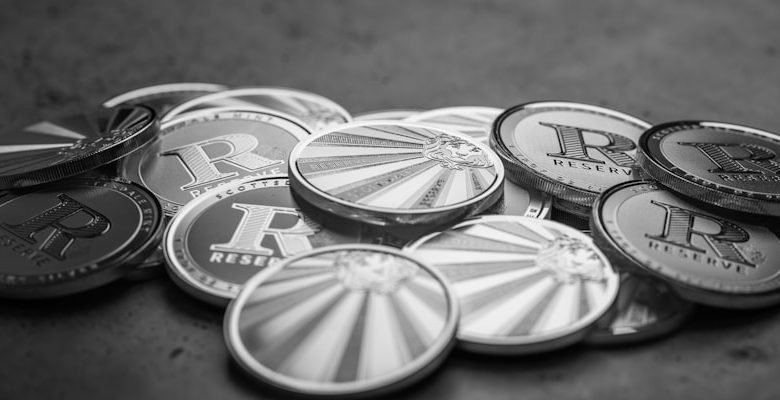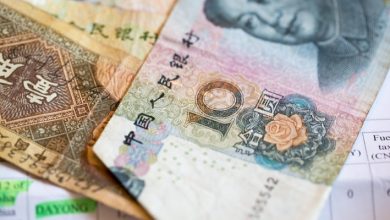Stablecoins and Their Role in Decentralized Finance

- Understanding stablecoins and how they are revolutionizing decentralized finance
- The benefits of using stablecoins in the world of DeFi
- Exploring the various types of stablecoins available in the market
- Regulatory challenges and the future of stablecoins in decentralized finance
- Stablecoins vs traditional fiat currencies: a comparative analysis
- Case studies: successful implementations of stablecoins in DeFi platforms
Understanding stablecoins and how they are revolutionizing decentralized finance
Stablecoins have emerged as a game-changer in the world of decentralized finance (DeFi). These digital assets are designed to maintain a stable value by pegging them to a reserve asset, such as fiat currency or commodities. This stability makes stablecoins an attractive option for users looking to avoid the volatility often associated with cryptocurrencies like Bitcoin and Ethereum.
One of the key benefits of stablecoins is their ability to facilitate seamless transactions within the DeFi ecosystem. Because stablecoins are pegged to a stable asset, users can transfer value without worrying about price fluctuations. This not only makes transactions more predictable but also reduces the risk of losing value during the transfer process.
Moreover, stablecoins are revolutionizing DeFi by providing users with access to financial services that were previously unavailable to them. For example, stablecoins enable individuals in regions with unstable currencies to store and transfer value in a more secure and reliable manner. This has the potential to empower millions of people who are underserved by traditional financial institutions.
In addition to their utility in everyday transactions, stablecoins are also playing a crucial role in the growth of decentralized applications (dApps). By using stablecoins as a medium of exchange, developers can create dApps that offer a wide range of financial services, such as lending, borrowing, and trading. This has the potential to democratize finance and give more people access to the tools they need to grow their wealth.
Overall, stablecoins are a powerful tool that is reshaping the landscape of decentralized finance. Their stability, utility, and accessibility make them an essential component of the DeFi ecosystem. As the popularity of DeFi continues to grow, stablecoins are likely to play an even more significant role in driving innovation and expanding financial inclusion.
The benefits of using stablecoins in the world of DeFi
Stablecoins play a crucial role in the world of decentralized finance (DeFi) by offering a reliable and stable store of value for users. These digital assets are designed to maintain a stable value by pegging them to a reserve asset, such as a fiat currency like the US Dollar or a commodity like gold. By using stablecoins in DeFi platforms, users can mitigate the volatility commonly associated with cryptocurrencies while still taking advantage of the benefits of blockchain technology.
One of the key benefits of using stablecoins in DeFi is the ability to access a wide range of financial services without the need for traditional banks or financial institutions. Users can borrow, lend, trade, and earn interest on their assets directly through DeFi protocols, all while using stablecoins as a stable and predictable medium of exchange. This opens up new opportunities for individuals and businesses to participate in the global financial system, regardless of their location or access to traditional banking services.
Additionally, stablecoins offer faster and more cost-effective transactions compared to traditional banking systems. With blockchain technology, transactions can be settled in a matter of seconds or minutes, regardless of the amount being transferred. This can significantly reduce the time and costs associated with cross-border payments, making it easier for individuals and businesses to send and receive funds internationally. Furthermore, the transparency and security of blockchain technology ensure that transactions are secure and immutable, providing users with peace of mind when using stablecoins in DeFi.
Exploring the various types of stablecoins available in the market
Stablecoins have gained popularity in the decentralized finance (DeFi) space due to their ability to maintain a stable value, unlike other cryptocurrencies that are known for their price volatility. There are various types of stablecoins available in the market, each with its own unique characteristics and underlying mechanisms.
One type of stablecoin is fiat-collateralized, which is backed by reserves of fiat currency such as the US dollar or the Euro. This type of stablecoin provides stability by pegging its value to a specific fiat currency on a 1:1 basis. Examples of fiat-collateralized stablecoins include Tether (USDT), USD Coin (USDC), and TrueUSD (TUSD).
Another type of stablecoin is crypto-collateralized, which is backed by reserves of other cryptocurrencies. This type of stablecoin maintains its stability by over-collateralizing the assets backing it, reducing the risk of price fluctuations. Examples of crypto-collateralized stablecoins include Dai (DAI) and sUSD.
Algorithmic stablecoins are a unique type of stablecoin that does not rely on any collateral to maintain its stability. Instead, algorithmic stablecoins use complex algorithms to regulate the coin’s supply based on market demand, making them more decentralized and independent of external assets. Examples of algorithmic stablecoins include Ampleforth (AMPL) and Terra (LUNA).
Understanding the various types of stablecoins available in the market is essential for investors and users looking to participate in DeFi platforms. Each type of stablecoin comes with its own set of advantages and risks, so it’s crucial to do thorough research before choosing which stablecoin to use for transactions or investments. By diversifying across different types of stablecoins, users can mitigate risk and take advantage of the benefits that each type offers in the ever-evolving DeFi ecosystem.
Regulatory challenges and the future of stablecoins in decentralized finance
The regulatory landscape surrounding stablecoins in decentralized finance is becoming increasingly complex as governments around the world grapple with how to classify and oversee these digital assets. There are concerns about potential risks to financial stability, money laundering, and consumer protection that have led some regulators to call for stricter oversight of stablecoin projects.
One of the key challenges facing stablecoins is the lack of a clear regulatory framework that applies uniformly across jurisdictions. This has led to uncertainty for stablecoin issuers and users alike, as they navigate a patchwork of regulations that can vary significantly from one country to another. Without clear guidelines, stablecoin projects may struggle to comply with existing laws or may inadvertently run afoul of regulations.
Another issue is the potential for stablecoins to be used in illicit activities, such as money laundering or terrorist financing. Regulators are keen to prevent stablecoins from being used for nefarious purposes, which has led to calls for enhanced anti-money laundering and know-your-customer requirements for stablecoin issuers. However, implementing these measures can be challenging, as stablecoins are designed to be decentralized and borderless, making traditional regulatory approaches less effective.
Despite these challenges, the future of stablecoins in decentralized finance remains promising. As regulators work to create a more coherent regulatory framework for stablecoins, there is potential for these digital assets to play a key role in expanding financial inclusion and access to global markets. By addressing regulatory concerns and fostering innovation in the stablecoin space, policymakers can help ensure that stablecoins continue to thrive as a vital component of the decentralized finance ecosystem.
Stablecoins vs traditional fiat currencies: a comparative analysis
Stablecoins have been gaining popularity in the decentralized finance sector due to their ability to provide price stability compared to traditional fiat currencies. When comparing stablecoins to traditional fiat currencies, several key differences emerge.
One major difference is the level of decentralization. Stablecoins are typically built on blockchain technology, which allows for a more decentralized system compared to traditional fiat currencies that are controlled by central banks. This decentralization can lead to increased transparency and security in stablecoin transactions.
Another key difference is the speed and cost of transactions. Stablecoins generally offer faster and more cost-effective transactions compared to traditional fiat currencies, which can be subject to delays and high fees, especially for cross-border transactions.
Additionally, stablecoins are often pegged to a specific asset or basket of assets, such as the US dollar or a combination of cryptocurrencies. This pegging helps to maintain price stability and reduce volatility, making stablecoins a more predictable store of value compared to traditional fiat currencies that can be subject to inflation and economic fluctuations.
Overall, while traditional fiat currencies have been the standard for centuries, stablecoins offer a new and innovative alternative that provides increased decentralization, faster transactions, and greater price stability. As the decentralized finance sector continues to grow, stablecoins are likely to play an increasingly important role in shaping the future of finance.
Case studies: successful implementations of stablecoins in DeFi platforms
Several successful implementations of stablecoins in DeFi platforms have demonstrated the potential of these digital assets to revolutionize the financial industry. Let’s take a look at some case studies that highlight the benefits of using stablecoins in decentralized finance:
- Compound Finance: One of the pioneering DeFi platforms, Compound Finance, has integrated stablecoins such as USDC and DAI to allow users to earn interest on their crypto holdings. By using stablecoins as collateral for borrowing and lending, users can access liquidity without the price volatility associated with other cryptocurrencies.
- MakerDAO: Another prominent DeFi platform, MakerDAO, has leveraged its stablecoin DAI to create a decentralized lending protocol. DAI is pegged to the US dollar through a system of collateralized debt positions, ensuring its stability and reliability as a medium of exchange within the ecosystem.
- Uniswap: The decentralized exchange Uniswap has also embraced stablecoins like USDT and TUSD to facilitate seamless trading without slippage. By providing a wide range of liquidity pools paired with stablecoins, Uniswap has become a go-to platform for traders looking to hedge against market volatility.
These case studies illustrate how stablecoins have become integral to the success of DeFi platforms by offering a reliable store of value, a medium of exchange, and a unit of account. As the adoption of stablecoins continues to grow, we can expect to see even more innovative use cases emerge in the decentralized finance space.



